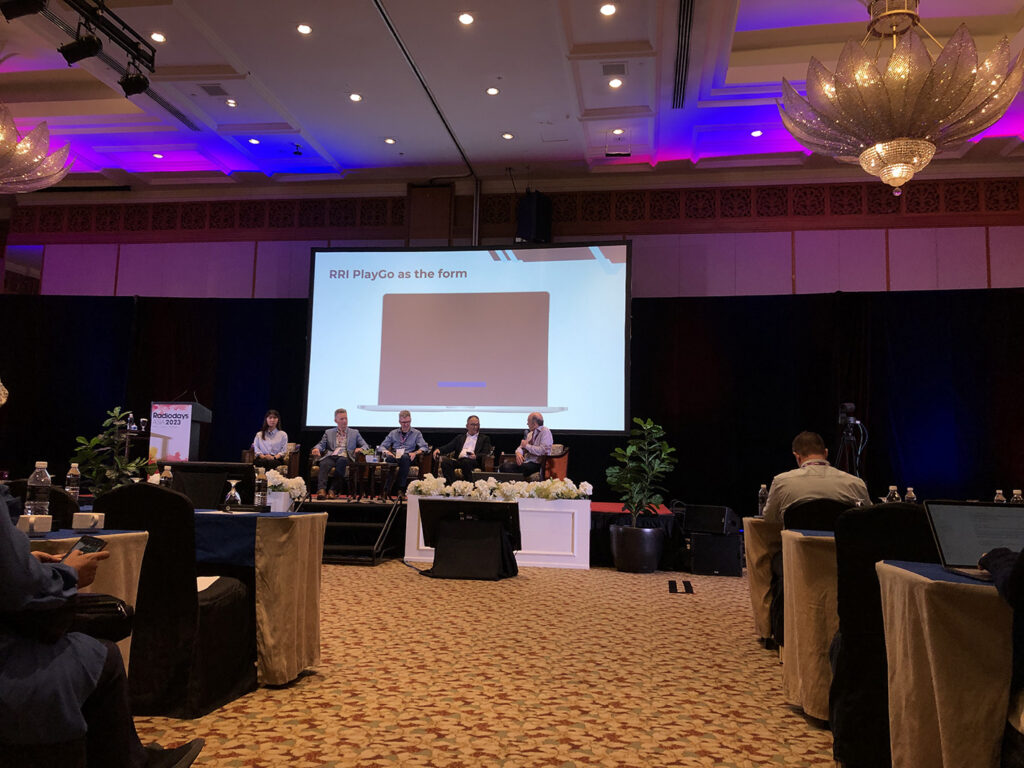INDONESIA
I Hendrasmo, RRI
Indonesians only spend an average of 32 minutes listening to radio, which is why local radio chose to go multiplatform compared to conventional radio. 77% of the Indonesian population use the Internet, stations have no choice but to put radio on online platforms.
RRI has released their new app, RRI PlayGo available on Google Play and App Store. The app is a streaming app for video, radio and music. It also offers services such as podcast radio, new articles, educational games as well as user engagement. It serves as a starting point for locals to start listening to radio on apps. The app’s main challenge is changing the mindset and habits of locals and convert them to tune in on PlayGo instead of conventional methods.
For video streaming, RRI’s broadcaster connects their content from broadcast television to the PlayGo app. However, distractions from popular streaming apps, such as YouTube, serve as a challenge for RRI. RRI is making an effort getting support from technology to improve interactions on their app.
AUSTRALIA
Andrew Morris, CBAA, Richard Phelps, This is Aim
CBAA serves numerous communities in Australia and ensure that every one of them is represented. CBAA partners with This is Aim for the development of audio apps and innovative apps to ensure that community radio can be heard anytime and anywhere. Morris discussed the challenges of their audio apps and the solutions to them.
One problem is stations’ audio streaming and infrastructure, including costs. CBAA is thinking beyond apps in order to compete with new and emerging platforms. They talk to tech giants such as Google and Amazon for the development of community radio on their apps. Competition is strong as over 400 stations in Australia are competing to get their station on these platforms. However, community radio consists mostly of volunteers who have limited time and funds.
CBAA’s Live Radio app serves as an engagement tool between users and the stations, provides a dynamic data programme schedule, podcast listen on demand and a database.
Bringing together over 400 stations on one app is a challenge itself, as the stations are worried about competing with other stations on the app. However, Morris says that the local community P1s are loyal to their stations and their community. Further education and training should be provided to the stations to constantly educate the importance of the app and how to use the app.
JAPAN
Ami Hasebe, Otonal
In Japan, only 10% of the population speaks English. Japanese radio using the same strategy as the English market will make it difficult to succeed in the local market.
The Japanese audio app market can be categorized into radio apps, streaming/social apps and music apps.
For radio to succeed in Japan, a deep understanding of the country’s many unique cultural aspects is needed. In Japan, the locals generally only speak Japanese, and just translation might not be enough. Hence, content localization is needed and stations need to consider using Japanese talent to get a local understanding of their content.
In short, content localization and strategies that align with locals’ culture and environment is crucial for radio to succeed in Japan. If required, collaboration with suitable partners should be considered.


